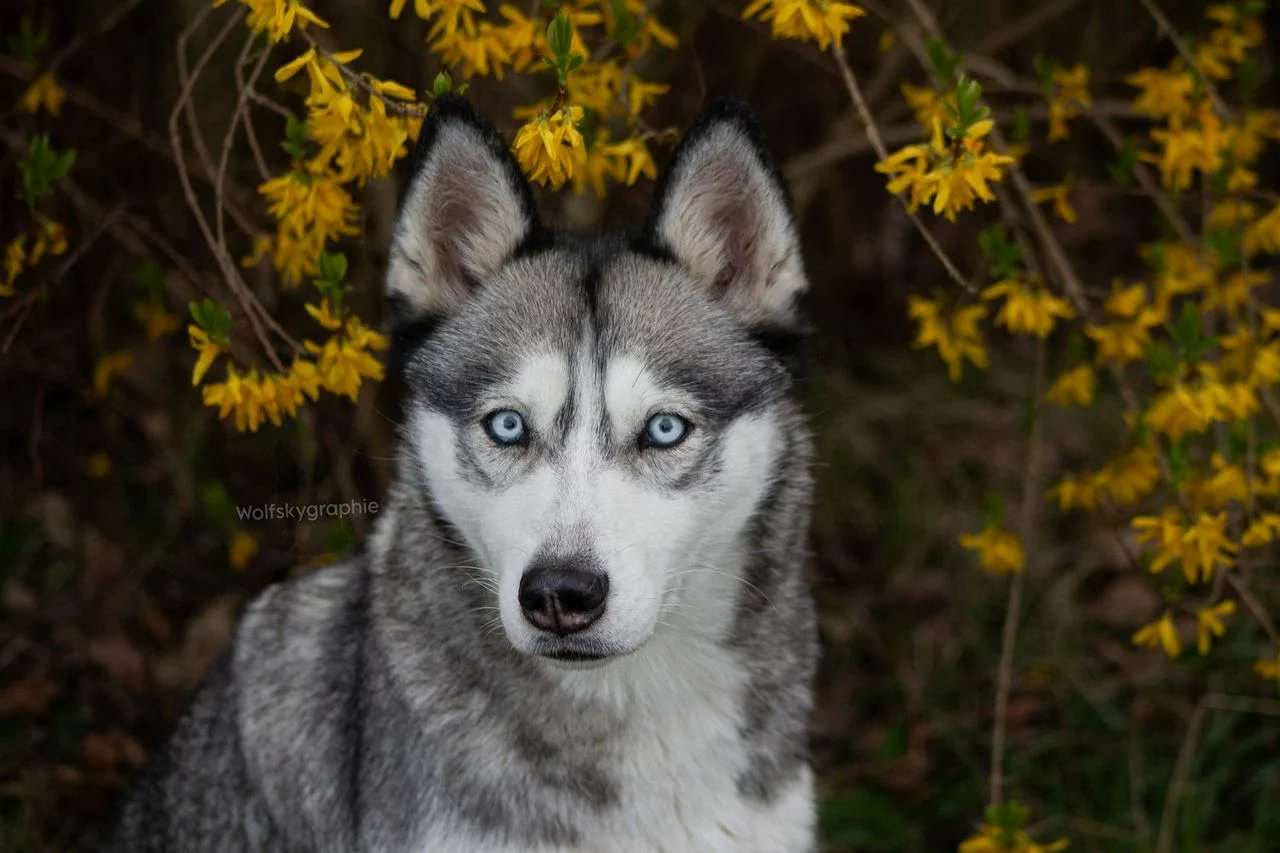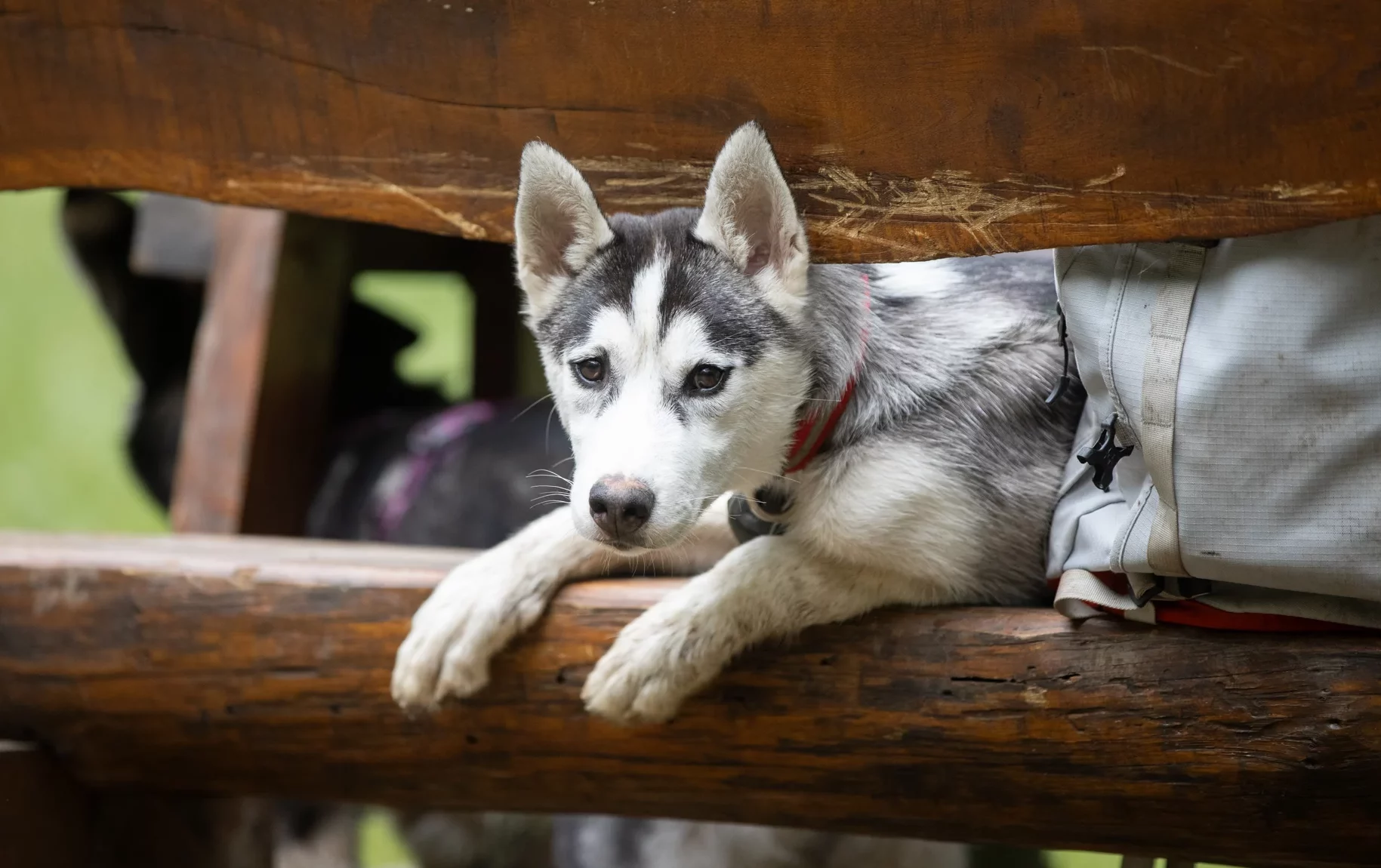Height
50cm – 60cm

The origin of the Siberian Husky lies in Eastern Siberia, where the Chukchi people used their ancestors as draught and hunting dogs.
Russian fur traders brought the dogs to Alaska, where they were initially mocked as „Siberian rats“ due to their comparatively small size.
In 1909, William Goosak was the first to enter a team of Siberian huskies in the All Alaska Sweepstakes, an annual sled dog race, and took third place.
Goosak had invested all his money in this race, but only the winner received the prize money, which is why he had to sell his team and return to Russia.
However, others had recognised the qualities of the Siberian Huskies through his efforts and they soon dominated sled dog races.
Leonard Seppala began the systematic breeding of this breed in the 1920s.
In 1930, the Siberian Husky was recognised as a breed in the USA.
FCI breed recognition followed in 1966.
Since the 1950s, a distinction has been made between the show line and the working line.
While the show line, which is mainly seen at dog shows, is primarily bred for aesthetics and an emphasis on the breed standard, the working line emphasises performance over standard conformity.
The Siberian Husky is an active, sociable breed with an attentive and gentle nature.
They are family orientated and friendly, but can show a certain amount of reserve and ignorance towards strangers.
Due to their great eagerness to work, they are easy to enthuse for sporting activities, but it must be remembered that they can also be quite independent and stubborn at times.
As the breed was originally also used for hunting, Siberian Huskies usually have a pronounced hunting instinct.

The Siberian Husky is a medium-sized, light-footed dog with a height at the withers of 50-56 cm for females and 53-60 cm for males.
The head should give a friendly, mischievous impression, which is particularly emphasised by the almond-shaped brown or blue eyes.
The ears should be set high, triangular and densely coated.
The Siberian Husky is still an enduring sled dog with a moderately compact body, a strong chest and well-muscled legs.
They have a strong, straight back with a slightly sloping croup. The tail is well-coated, brush-shaped and is usually carried hanging over the back in a sickle-shaped curve when moving.
The coat is double, with a firm, medium-length outer coat and a dense, soft undercoat.
All shades of black, grey, fawn, sand and red (liver gene) and white are permitted.
White markings and patterns, including piebald, are common.

The Siberian Husky is generally a healthy, robust breed. Many dogs reach an age of over 12 years.
Most of the diseases that occur in the breed are testable and therefore easy to control.
Prevalent genetic diseases are DM and Von Willebrand’s disease.
An examination for HD is also important.
In addition, an eye examination should be carried out before each litter to rule out diseases such as cataracts and goniodysgenesis.
Although Siberian Huskies often have light-coloured coats, they do not normally require extensive grooming.
Only during the shedding period should they be brushed regularly to remove loose hair and prevent matting.
27.05.2021
Siberian Husky15.02.2018
Siberian Husky24.12.2020
Siberian Husky